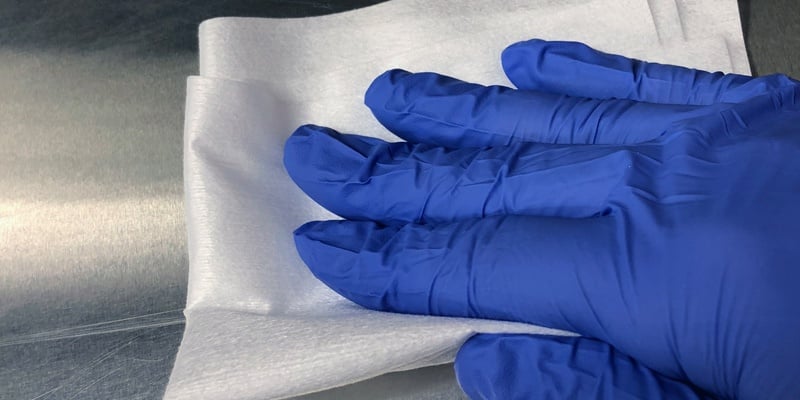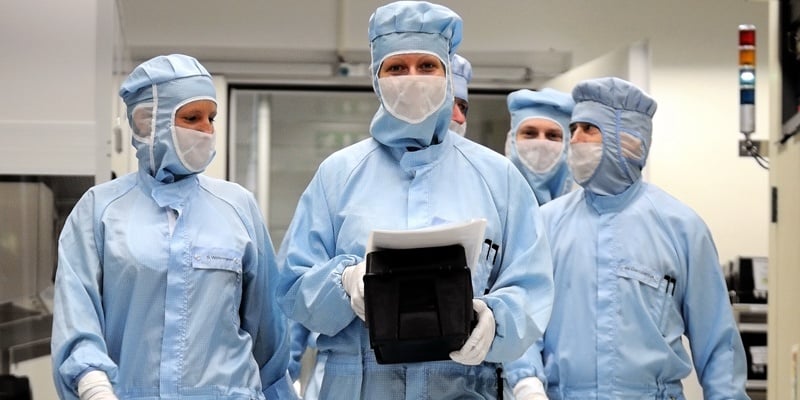Cleanrooms are designed to prevent particle entry, purge and filter air, provide different areas for different levels of cleanliness, and isolate spaces and air pressure as needed. However, the design of the cleanroom is not enough to keep it clean. Having a cleanroom cleaning procedure in place is incredibly important for any organization that manufactures goods in a controlled environment.
Without cleanroom cleaning procedures, your cleanroom runs several risks. For one, it probably won’t be cleaned properly, so you might fail audits or quality checks. The cleanroom could become contaminated by skin cells, hair, bacteria, dust, fungus, perfumes, cosmetics, lint, and more. Any amount of contamination can tarnish your products, which is money down the drain if they can’t be sold. You’ll have to eat the costs of the labor required to manufacture the goods, the costs of the supplies involved, and any overhead. If contaminated goods actually make it to market, you put your organization at risk for a lawsuit if end users experience any adverse effects.
Simply attacking cleanroom cleaning on an as-needed or as-noticed basis will not be enough to protect you, your organization, or your end users — plus, it’ll be a headache. A true, clear, outlined procedure will help eliminate any potential confusion or last-minute rushes trying to keep your cleanroom in order.
How to Keep a Cleanroom Clean

Before we dive into an actual cleanroom cleaning procedure, it’s important to note some staple cleanroom protocols. For example, before anyone enters the cleanroom to clean it, have them remove personal items (jewelry, keys, etc.) from their person and store them outside the gowning room. If someone absolutely must bring a personal item in the cleanroom, ensure the item stays beneath the cleanroom garments.
Have everyone who enters the cleanroom follow proper gowning and gloving procedures and step on a tacky mat before entering the controlled environment. Do not allow anyone to eat, smoke, or even chew gum within the cleanroom. Ensure only approved cleanroom garments are worn inside the cleanroom and have everyone who enters the cleanroom remove cosmetics. Finally, while cleaning, no one should perform any fast motions, and no one who is physically ill should be allowed inside the controlled environment.
General Cleanroom Cleaning Procedure Checklist
Now that those who will be cleaning the cleanroom are fit to enter it, here’s an example of what a full cleanroom cleaning process looks like:
- Empty waste bins and replace liners.
- Vacuum.
- Wipe down ceilings, lights, vent covers, walls, air returns, and filter grills.
- Clean windows.
- Wipe down all equipment and other surfaces (benches, shelving, etc.).
- Clean doors, door jams, and thresholds.
- Mop.
- Change tacky mats upon entry and exit as required.
Of course, this should be done using only cleanroom-certified or cleanroom-approved supplies and solutions.
If all the above steps and protocols are followed in addition to having a cleanroom designed to keep contaminants out, you’ll be headed down a good path for cleanroom cleanliness. But if you’re still worried about potentially missing critical steps, don’t worry. We’ve laid out everything you need to know about the cleanroom cleaning process in our free guide.






